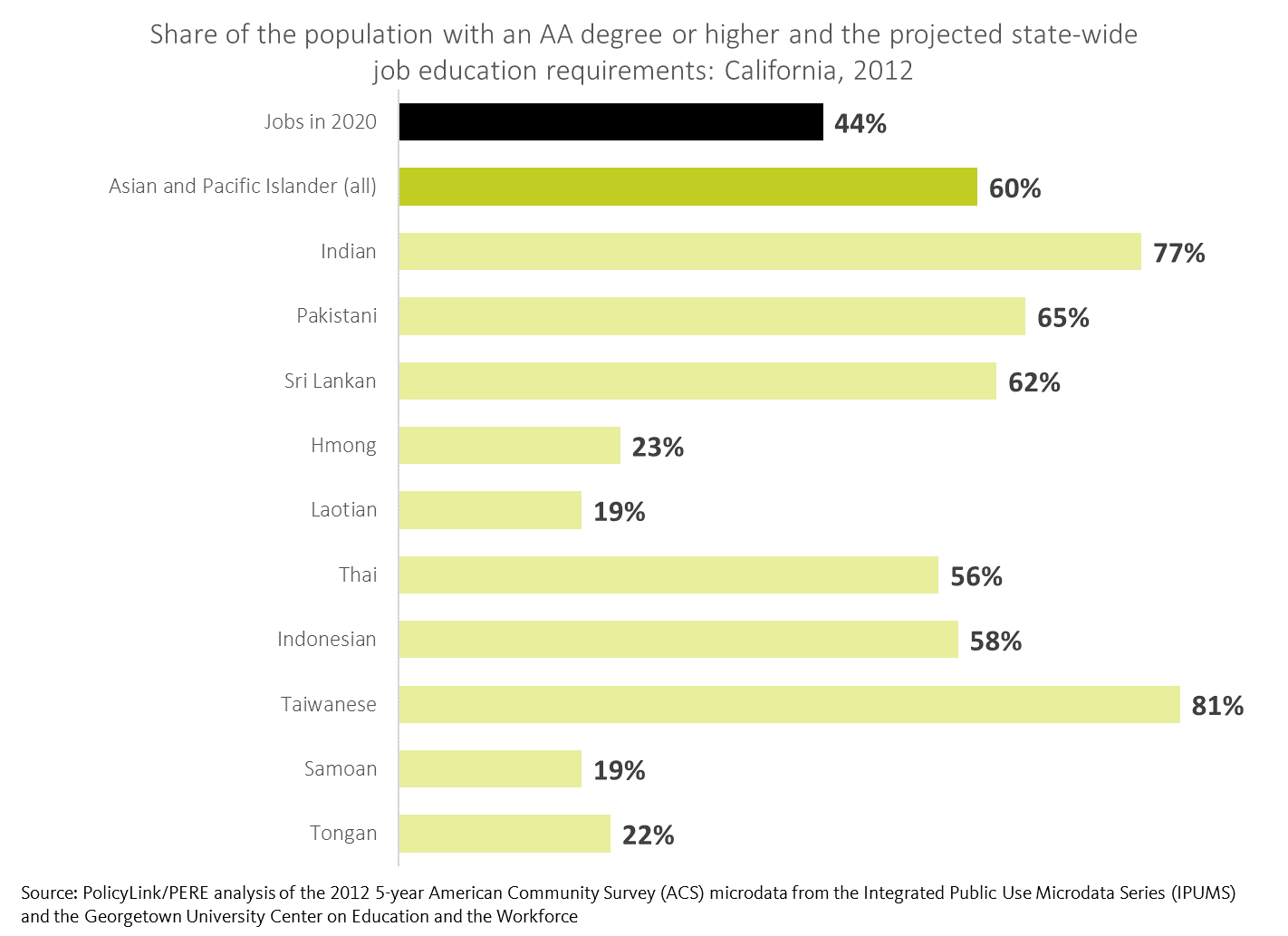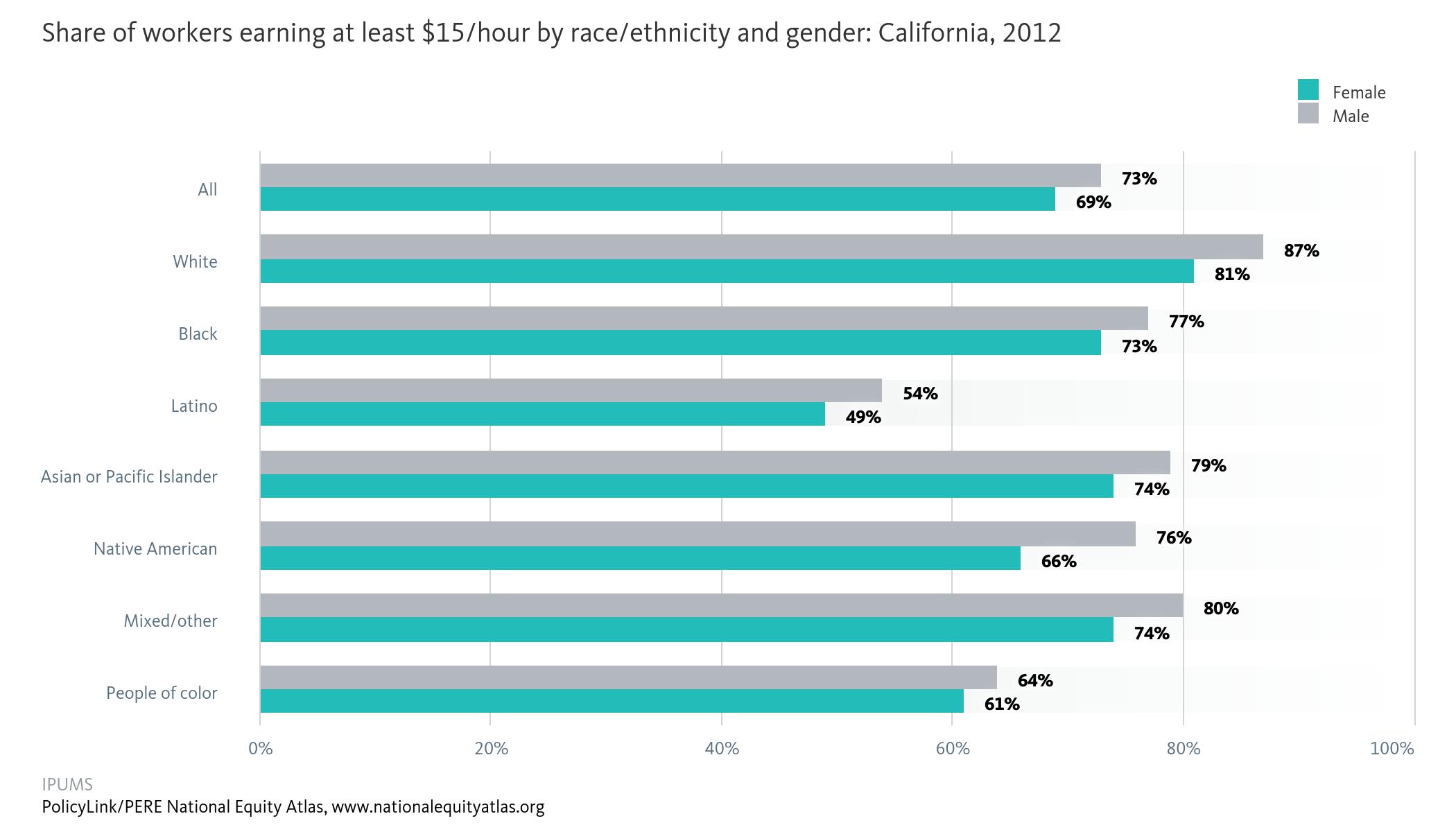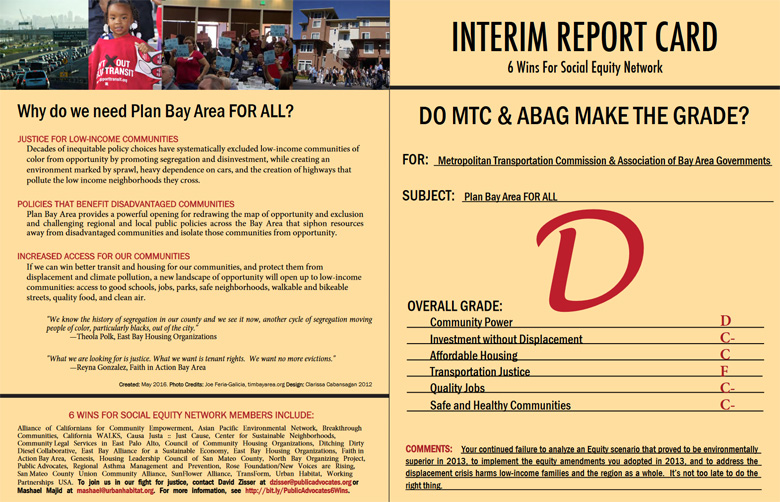Cross-posted from the New Economy Week
Uber recently purchased one of the largest office spaces in downtown Oakland, California, with plans to move 3,000 of its workers there by 2017. For a city facing a housing crisis and rapid displacement of Black families and low-income communities, many fear this act will accelerate gentrification pressures. It has also led to some cautious optimism for an opportunity to make Oakland a leader in what Mayor Libby Schaaf has called techquity: “fostering our local technology sector’s growth so it leads to shared prosperity.”
Tech companies can play a role in advancing an equitable economy, but they will first have to confront a deeply inequitable status quo. The San Francisco Bay Area has one of the highest levels of inequality of any region in the country, and it is growing at an alarming pace. Unequal access to business and job opportunities have deepened racial economic gaps – Black and Latino workers earn a median wage that is $10 an hour less than White workers in the Bay Area, and these racial inequities exist across all education levels. The tech-driven “innovation economy” can reverse these trends. But to understand how, it’s important to examine how the innovation economy works.
An innovation economy is based on a model of economic growth that leads with knowledge, technology, and entrepreneurship to increase productivity, and therefore business revenues and profits. It is not a particular sector of the economy, rather it cuts across many sectors and industries, such as information technology, advanced manufacturing, and energy. Increasingly, cities across the country are pursuing economic growth through innovation by creating what The Brookings Institution calls Innovation Districts – urban, walkable neighborhoods where research institutions are housed alongside start-ups, incubators, and accelerators in order to foster a network of “creative class” technologists to spur economic activity.
This economic model raises important equity questions: Who is developing these new technologies and how do they decide which societal challenges to focus on? Who owns these companies, and who is investing in (and profiting from) them? Who works at these companies, and who works in the many jobs that support them? How is the wealth they create distributed among the workers, the community, and the city where the company is located? In other words: Who benefits?
Throughout most of the innovation economy, and in technology companies in particular, the answer to these questions does not include Black, Latino, and low-income communities. Black and Latino residents combined make up only five percent of the tech workforce, two percent of tech company founders, and two percent of investors, even though they are nearly 30 percent of the U.S. workforce. Innovative companies spur the creation of a large number of service and support jobs – as many as four support jobs for every one technology job created – but these tend to pay low wages, even though rents and the cost of living are rising most rapidly in areas with strong innovation economies.
This presents a paradox. Today, the innovation economy is undoubtedly contributing to rising inequality and a widening racial income and wealth gap. Yet a growing body of research is showing that equity – just and fair inclusion in society – is not only beneficial for innovation, but is essential for our future economic prosperity. Diverse companies are more innovative and more profitable. Regions with greater equity have longer economic growth spells and fewer and shorter downturns. And reduced income inequality may actually lead to more inventors, who create more new technologies and drive innovation forward.
So how can we foster an equitable innovation economy?
Here are three examples of organizers, educators, and, yes, even economic developers, who are working to harness the power of the innovation economy to head towards a future of shared prosperity for all:
Raising the floor for the low-wage "invisible" workforce in Silicon Valley
Tech companies may have a dismal record on diversity among their engineers and top executives, but they employ the services of thousands of workers of color, mostly Black and Latino, who cook, clean, and guard for them. Most of these “invisible” workers earn less than a quarter of the salaries of the engineers they work with in the same building.
In Silicon Valley, janitors, food workers, bus drivers, and other low-wage workers are rising up to demand good jobs from these tech companies. Silicon Valley Rising, launched in February of this year, is a coalition of labor groups, faith leaders, and community-based organizations that is pushing for quality jobs, affordable housing, and corporate responsibility in the tech sector.
In its first ten months, it has achieved impressive results. The shuttle drivers who drive Facebook employees voted last Spring for a union contract that increases their pay by over 25 percent and includes health care, paid time off, better scheduling, and more. Facebook has also agreed to require their contractors pay a minimum of $15 an hour and provide paid time off. Apple, Google, Microsoft, and other Bay Area tech companies have also improved wages and working conditions for some of their contract workers.
“We believe we can create something different here,” said Maria Noel Fernandez, campaign director with Silicon Valley Rising. “We’re working to inspire tech to rebuild the middle class with us.”
Re-directing planning and economic development tools to support manufacturing and promote equitable innovation
With an unemployment rate below four percent, some are declaring that the Bay Area has recovered from the recession. Yet this masks the reality of where the job growth has been – primarily in low-wage jobs and some high-wage jobs – and where it’s not been – mainly in middle-wage jobs that have seen a nearly 10 percent decline over the last 12 years in the Bay Area. These middle-wage jobs may not be found in tech companies, but they do exist in industries like manufacturing, and are essential to building an equitable innovation economy.
During the economic boom of the late 1990s, the City of San Jose faced enormous pressure to convert much of its industrial land in the north end of the city to housing or other development. However, these industrial spaces were some of the few places where manufacturers could locate. Instead of converting the land, the City adopted a development policy for the area that prioritized industrial uses. Today, the area is home to 25 percent of all jobs in San Jose, many of which are provided by manufacturers that supply some of the biggest tech companies in the area with custom orders for new products or parts.
San Jose is one of four cities that has joined the Equitable Innovation Economies Initiative, a project of the Urban Manufacturing Alliance led by the Pratt Center for Community Development with PolicyLink. Each of the four cities – New York City, Indianapolis, and Portland, Oregon – is designing strategies to increase access and economic opportunities within the innovation economy such as targeting investment dollars to entrepreneurs of color and women, bringing businesses back to industrial spaces in working class communities, and supporting manufacturers to hire neighborhood residents. As a part of this initiative, San Jose is now working with manufacturers and community colleges to create a pipeline for young people from low-income communities to start careers in manufacturing.
Developing the leadership and tech skills of young, Black men in Oakland.
Begun in 2012 as a labor of love by five Black entrepreneurs and technologists, The Hidden Genius Project was envisioned as a project for youth to discover their passions through technology, entrepreneurship, and leadership skills. Three years later, The Hidden Genius Project has served over 350 Black youth and young men, and was recently announced a winner for the highly competitive Google Impact Challenge Grant.
Based in Oakland, the project operates in the center of the Bay Area’s tech economy, yet in neighborhoods like East Oakland where few tech workers live. They plan to change that equation by involving young men in middle school and high school in an intensive, multi-year training and mentorship program to develop new tools and start companies that meet the challenges in their communities. They organize hackathons, workshops, visits to tech campuses, and provide an intensive 15-month program.
“We don’t do this work so that companies like Google can diversify its workforce,” said Brandon Nicholson, founding executive director of The Hidden Genius Project. “We do it so that Black youth can be leaders in transforming their lives and communities.”
The innovation economy can help us solve one of the most pressing challenges of our generation – rising inequality and a growing racial wealth and income gap – or it can accelerate us down our current path of low-wage jobs for the many and unimaginable wealth for the few. These local leaders are showing that an equitable innovation economy is possible. Indeed, it is necessary. Now, it is up to us all to create it.


